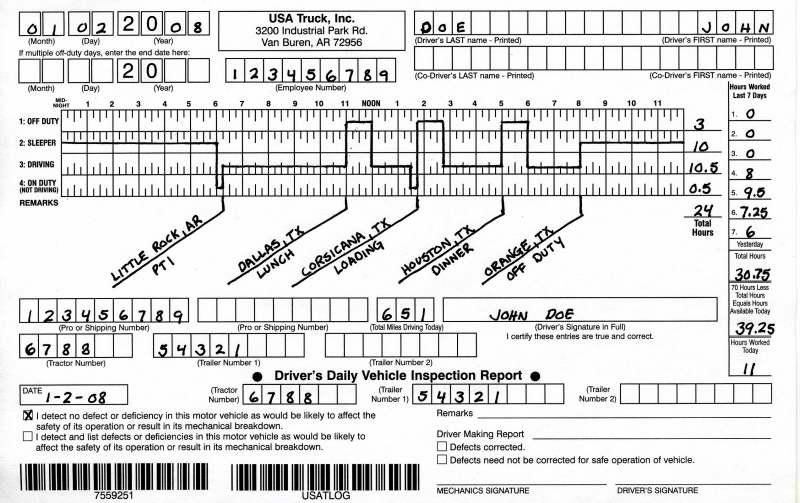Review Questions - Click On The Picture To Begin...

Your log must include all of the following except:
- Total driving miles
- Truck or tractor and trailer number
- Your signature
- Your home address
Quote From The CDL Manual:
The regulations do not say what the log form must look like. However, it must include a 24-hour graph grid, which is shown in the regulations, and the following information on each page:
- Total driving miles: You must write down the total number of miles you drove during the 24-hour period.
- Main office address: You must write down your carrier’s main office address.
- Truck or tractor and trailer number: You must write down either the vehicle number(s) assigned by your company, or the license number and licensing state for each truck (and trailer, if any) you drove during the 24-hour period.
- Your signature: You must certify that all of your entries are true and correct by signing your log with your legal name or name of record.
Next
When you change your duty status, you must document all of the following except:
- The city or town you are in
- The state you are in
- The county you are in
- All of these must be documented
Quote From The CDL Manual:
Remarks: This is the area where you must list the city, town, or village, and state abbreviation when a change of duty status occurs. You should also explain any unusual circumstances or log entries that may be unclear when reviewed later, such as encountering adverse driving conditions.
TruckingTruth's Advice:
Law enforcement officers will check all of your paperwork, including receipts or toll records, to make sure your logs are showing the correct locations at the correct times.
Prev
Next
What hours must your logbook show?
- All 24 hours of every day
- Only the hours you are on duty or driving
- Only your resting hours
- The logbook only needs to show a 12 consecutive hour time frame each day
Quote From The CDL Manual:
You must account for every day on your log, even days off, unless you are covered by a logbook exception on any of the days. The log must cover all 24 hours of every day.
TruckingTruth's Advice:
All logbooks must show 24 hours for each day and each hour must be accounted for. Even if you were off duty for an entire 24 hour stretch, you must log the entire day as off duty.
Prev
Finish
Please select an option








 TT On Facebook
TT On Facebook